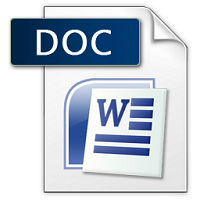₹198.00
Scroll down for Match your questions with Sample
Note- Students need to make Changes before uploading for Avoid similarity issue in turnitin.
Another Option
UNIQUE ASSIGNMENT
0-20% Similarity in turnitin
Price is 700 per assignment
Unique assignment buy via WhatsApp 8755555879
Description
| SESSION | AUG-SEP’23 |
| PROGRAM | MASTER OF BUSINESS ADMINISTRATION (MBA) |
| SEMESTER | III |
| COURSE CODE & NAME | DITF303-TECHNOLOGY MANAGEMENT |
Assignment Set – 1
- Explain the purpose of technology management in any industry or firm. Also, discuss the formal process framework for effective technology management
Ans 1.
Technology management plays a pivotal role in the modern business landscape, cutting across various industries and firms. Its primary purpose is to effectively manage the technological resources of a company to maximize efficiency, foster innovation, and maintain a competitive edge in the market. This comprehensive approach involves the planning, development, implementation, and monitoring of technological capabilities to align them with the business strategy and objectives.
Importance of Technology Its Half solved only
Buy Complete from our online store
https://smuassignment.in/online-store/
MUJ Fully solved assignment available for session SEPT 2023.
Lowest price guarantee with quality.
Charges INR 198 only per assignment. For more information you can get via mail or Whats app also
Mail id is aapkieducation@gmail.com
Our website www.smuassignment.in
After mail, we will reply you instant or maximum
1 hour.
Otherwise you can also contact on our
whatsapp no 8791490301
- Examine the nuances of technology adoption, absorption, and diffusion, highlighting their contrasting elements. Provide an illustrative instance of a comprehensive technology package in the process of acquiring new technological advancements.
Ans 2.
Technology adoption, absorption, and diffusion are critical concepts in understanding how new technologies are integrated into societies and organizations. Each of these stages represents a distinct phase in the lifecycle of technology integration, with unique characteristics and challenges.
Technology
- Explore the significance of technology acquisition and its crucial role for enterprises in staying competitive within the market.
Ans 3.
In the rapidly evolving business landscape, technology acquisition has emerged as a pivotal strategy for enterprises aiming to maintain a competitive edge. This process involves the procurement of new technologies, either through direct purchase, licensing, mergers, or acquisitions. It enables companies to access innovative
Assignment Set – 2
- Examine the intersection of sustainability and human values within the evolving realm of technology.
Ans 4.
In the rapidly evolving landscape of technology, the intersection of sustainability and human values has become a focal point of discussion and innovation. This convergence is not just a trend but a necessary shift in how we perceive and interact with technology, ensuring that our advancements are aligned with the long-term well-
- Discuss a summary of how technology has evolved within an organization and examine the significant factors that have shaped its development.
Ans 5.
Technology Evolution in Organizations
The evolution of technology within organizations has been a dynamic and transformative journey, significantly shaping the way businesses operate and compete. From the early days of manual processes to the
- If you have access to specific technology, how do you intend to assess its impact on organizational productivity?
Ans 6.
In the modern business landscape, technology plays a pivotal role in shaping organizational productivity. The integration of new technological tools and systems can lead to significant improvements in efficiency, communication, and overall performance. However, to truly understand and maximize these benefits, it is crucial for organizations to assess the impact of technology systematically. This assessment involves examining various aspects of technology implementation,


